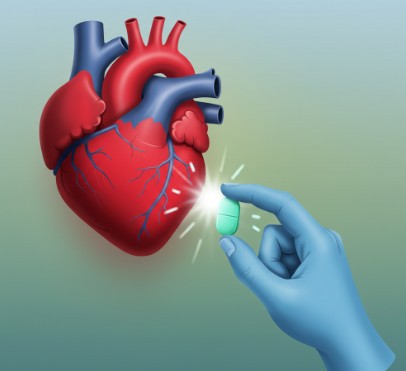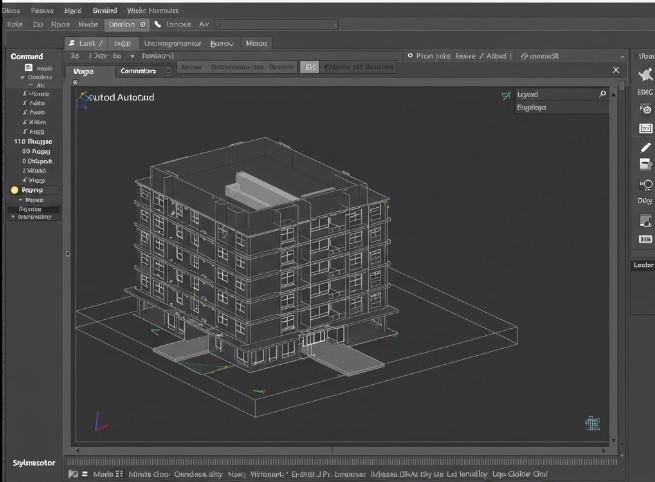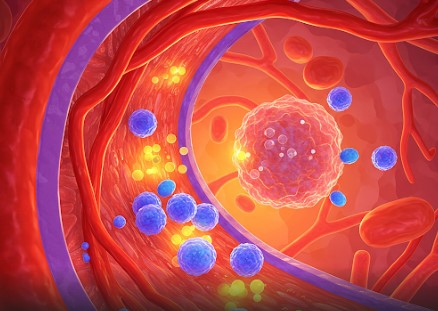
High blood pressure, or hypertension, is a common health issue where the force of blood against your artery walls is too high. Over time, this can lead to serious problems like heart disease and stroke. Luckily, there are many effective medications available to help manage it. These drugs work in different ways, and your doctor will choose the best one for you based on your health needs.
This article will explain the main types of blood pressure medications in simple terms, outlining their pros and cons, and giving some examples of common drugs in each group.
The Main Players: Common Classes of Hypertension Drugs
Here’s a look at the most common groups of medications used to lower blood pressure:
1. Diuretics (Water Pills)
Diuretics help your body get rid of extra salt and water through urine. This means there’s less fluid flowing through your blood vessels, which reduces blood pressure.
- Advantages:
- Often the first choice for treating high blood pressure.
- Generally effective and affordable.
- Can be particularly helpful for older adults and African Americans.
- Helpful in reducing swelling (edema).
- Disadvantages:
- May cause you to urinate more often.
- Can lead to loss of potassium, which might require monitoring or supplements (some types are “potassium-sparing”).
- May cause dizziness, dehydration, or muscle cramps.
- Can sometimes affect blood sugar or cholesterol levels.
- Examples of Diuretics:
- Hydrochlorothiazide (HCTZ): A very common thiazide diuretic, often used as a first-line treatment.
- Chlorthalidone: Similar to HCTZ but may last longer in the body, potentially offering better blood pressure control over 24 hours.
- Furosemide (Lasix): A powerful loop diuretic, often used when stronger fluid removal is needed, such as in heart failure or kidney disease.
- Spironolactone (Aldactone): A potassium-sparing diuretic, meaning it helps remove water and salt without causing significant potassium loss. It also blocks a hormone called aldosterone.
- Indapamide: A thiazide-like diuretic that works similarly to HCTZ and chlorthalidone to lower blood pressure.
2. Angiotensin-Converting Enzyme (ACE) Inhibitors
ACE inhibitors help relax your blood vessels by blocking the production of a natural chemical called angiotensin II, which normally narrows blood vessels.
- Advantages:
- Very effective in lowering blood pressure.
- Good for people with certain kidney problems (especially due to diabetes) or heart failure.
- Generally well-tolerated.
- Disadvantages:
- Can cause a dry, persistent cough in some people.
- May cause dizziness or high potassium levels.
- Rarely, can cause a serious side effect called angioedema (swelling of the face, lips, and throat).
- Not recommended during pregnancy.
- Examples of ACE Inhibitors:
- Lisinopril (Zestril, Prinivil): A widely prescribed ACE inhibitor, taken once daily.
- Enalapril (Vasotec): Another common ACE inhibitor, often used for hypertension and heart failure.
- Ramipril (Altace): Used for high blood pressure, heart failure, and to reduce the risk of heart attack or stroke in high-risk patients.
- Captopril: One of the first ACE inhibitors developed, it may need to be taken multiple times a day.
- Benazepril (Lotensin): Prescribed for hypertension, it helps relax blood vessels and decrease blood volume.
3. Angiotensin II Receptor Blockers (ARBs)
ARBs also block the effects of angiotensin II, but they do so by preventing it from binding to its receptors in the blood vessels. This also helps relax blood vessels and lower blood pressure. They are often used when ACE inhibitors cause side effects like a cough.
- Advantages:
- Similar benefits to ACE inhibitors (effective, good for kidney disease and heart failure).
- Less likely to cause a dry cough compared to ACE inhibitors.
- Generally well-tolerated.
- Disadvantages:
- Can cause dizziness or high potassium levels.
- Rarely, can cause angioedema (though less common than with ACE inhibitors).
- Not recommended during pregnancy.
- Examples of ARBs:
- Losartan (Cozaar): A commonly used ARB for hypertension, also helps protect kidneys in diabetic patients.
- Valsartan (Diovan): Prescribed for high blood pressure, heart failure, and after a heart attack.
- Irbesartan (Avapro): Used to treat high blood pressure and protect kidneys in patients with type 2 diabetes.
- Candesartan (Atacand): Effective for hypertension and heart failure.
- Olmesartan (Benicar): Used for hypertension, it blocks angiotensin II from tightening blood vessels.
4. Calcium Channel Blockers (CCBs)
Calcium channel blockers prevent calcium from entering the muscle cells of your heart and blood vessels. This allows blood vessels to relax and widen, making it easier for blood to flow and lowering blood pressure. Some CCBs can also slow your heart rate.
- Advantages:
- Effective in lowering blood pressure, especially for African Americans and older adults.
- Can be helpful for treating chest pain (angina) and irregular heartbeats.
- Disadvantages:
- Can cause side effects like headache, dizziness, flushing (redness of the skin), and swelling in the ankles or feet.
- Some types can cause constipation.
- Certain CCBs should not be taken with grapefruit juice as it can affect how the drug works.
- Examples of Calcium Channel Blockers:
- Amlodipine (Norvasc): A very common dihydropyridine CCB, mainly affects blood vessels.
- Nifedipine (Procardia): Another dihydropyridine CCB, used for hypertension and angina.
- Diltiazem (Cardizem): A non-dihydropyridine CCB that affects both blood vessels and the heart, helping to slow heart rate.
- Verapamil (Calan, Verelan): A non-dihydropyridine CCB, primarily affects the heart to reduce heart rate and workload, also relaxes blood vessels.
- Felodipine: A dihydropyridine CCB that widens blood vessels to lower blood pressure.
5. Beta-Blockers
Beta-blockers work by blocking the effects of the hormone adrenaline (epinephrine). This makes your heart beat slower and with less force, which lowers blood pressure.
- Advantages:
- Effective for lowering blood pressure.
- Also used for conditions like angina, heart failure, irregular heartbeats, and migraines.
- Can be beneficial after a heart attack.
- Disadvantages:
- May cause fatigue, cold hands and feet, dizziness, or sleep problems.
- Can worsen asthma symptoms in some people.
- May affect blood sugar levels in people with diabetes.
- Can sometimes cause erectile dysfunction.
- Stopping beta-blockers suddenly can be dangerous; they should be tapered off under a doctor’s supervision.
- Examples of Beta-Blockers:
- Metoprolol (Lopressor, Toprol XL): A commonly used beta-blocker, available in immediate-release and extended-release forms.
- Atenolol (Tenormin): Another common beta-blocker, primarily affects the heart.
- Propranolol (Inderal): One of the older beta-blockers, used for various conditions including hypertension, anxiety, and migraines.
- Bisoprolol (Zebeta): Often used for hypertension and heart failure, it mainly targets beta-1 receptors in the heart.
- Carvedilol (Coreg): A beta-blocker that also has alpha-blocking properties, meaning it relaxes blood vessels as well as slowing the heart.
Other Important Classes:
While the above are the most common, other classes of drugs can also be used:
6. Alpha-Blockers
Alpha-blockers reduce nerve impulses to blood vessels, allowing blood to pass more easily and causing blood pressure to go down. They can also be used to treat prostate problems in men.
- Advantages:
- Can improve urine flow in men with benign prostatic hyperplasia (BPH).
- May have a beneficial effect on cholesterol levels.
- Disadvantages:
- May cause dizziness, lightheadedness, or fainting, especially with the first dose or when standing up quickly (orthostatic hypotension).
- Can cause headache or a fast heartbeat.
- Not usually the first choice for treating high blood pressure alone.
- Examples of Alpha-Blockers:
- Doxazosin (Cardura): Used for both hypertension and BPH.
- Prazosin (Minipress): Prescribed for high blood pressure; may also be used off-label for conditions like PTSD-related nightmares.
- Terazosin (Hytrin): Treats both high blood pressure and symptoms of an enlarged prostate.
- Tamsulosin (Flomax): Primarily used for BPH, but has some blood pressure-lowering effects. (Often considered more selective for prostate).
- Alfuzosin (Uroxatral): Another drug primarily for BPH that can also lower blood pressure.
7. Vasodilators
These drugs directly relax the muscles in the walls of your blood vessels (especially arteries), causing them to widen and allowing blood to flow more easily.
- Advantages:
- Can be very effective in lowering severely high blood pressure.
- Disadvantages:
- Can cause side effects like headache, flushing, rapid heartbeat (palpitations), and fluid retention (swelling).
- Often used in combination with other blood pressure medications to manage side effects.
- Usually reserved for difficult-to-control hypertension.
- Examples of Vasodilators:
- Hydralazine: Directly relaxes the smooth muscles of arterioles (small arteries).
- Minoxidil: A very potent vasodilator, often used for severe, resistant hypertension. Also known for its topical use for hair growth (Rogaine).
- Nitroprusside: A powerful intravenous vasodilator used in hypertensive emergencies.
- Isosorbide dinitrate: Primarily used for angina, but has vasodilating effects that can lower blood pressure.
- Isosorbide mononitrate: Similar to isosorbide dinitrate, used for angina prevention with blood pressure-lowering effects.
8. Renin Inhibitors
This is a newer class of drugs. They work by blocking renin, an enzyme produced by your kidneys that starts a chemical reaction that raises blood pressure.
- Advantages:
- Targets the renin-angiotensin-aldosterone system (RAAS) at its starting point.
- Disadvantages:
- Can cause diarrhea and other digestive issues.
- May cause dizziness or cough.
- Should not be used with ACE inhibitors or ARBs in people with diabetes or kidney problems due to increased risks.
- Not recommended during pregnancy.
- Examples of Renin Inhibitors:
- Aliskiren (Tekturna): Currently the only approved renin inhibitor. It directly blocks the action of renin. (Note: Availability and use may vary by region and evolving guidelines.) (Currently, Aliskiren is the primary drug in this class. Finding five distinct examples of widely used renin inhibitors is difficult as it’s a smaller and newer class compared to others.)
Important Things to Remember
- Never stop or change your medication without talking to your doctor. Suddenly stopping some blood pressure drugs can be dangerous.
- Take your medication as prescribed, even if you feel fine. High blood pressure often has no symptoms.
- Lifestyle changes like a healthy diet, regular exercise, quitting smoking, and managing stress are also very important for controlling blood pressure and often work alongside medications.
- Regular check-ups with your doctor are crucial to monitor your blood pressure and make sure your treatment is working effectively and safely.
Managing high blood pressure is a partnership between you and your healthcare provider. Understanding your medications is a key part of taking control of your health. If you have any questions or concerns about your blood pressure treatment, always speak to your doctor or pharmacist.




